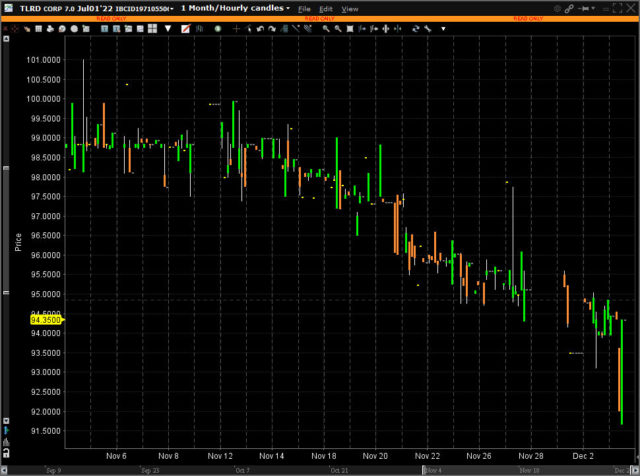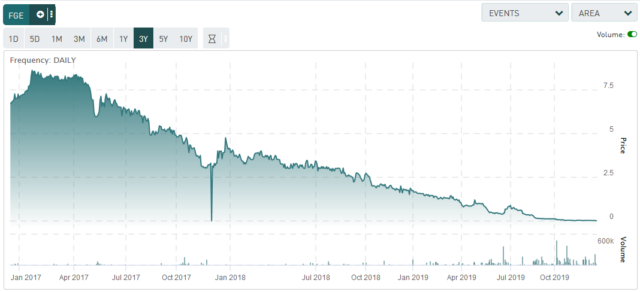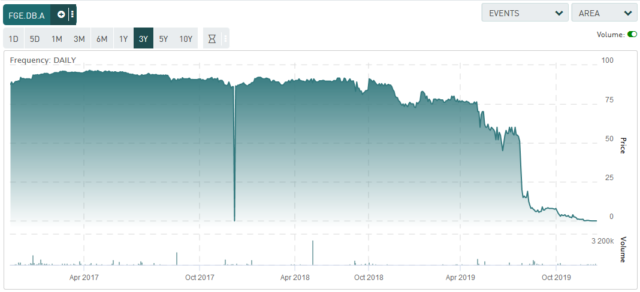A good part of investing is trying to constantly trying to figure out whether the information that got you into a trade is still applicable or whether it is flat-out incorrect. Unfortunately, the information that you glean from investing without insider information is diffuse and sometimes the decisions made are marginal ones – hence, it is never wise to bet too much of your portfolio on any investment thesis. More certainty of information over your perception of the information that others are pricing into the security allows for a more concentrated bet.
In the instance of Tailored Brands (NYSE: TLRD), it was a combination of diffuse information, hence a relatively modest position. There was a panic in September, coupled with management’s capital allocation decision to cut the dividend to zero, coupled with the actual numbers looking relatively cheap from a valuation perspective (they are a legitimate retail operation, albeit selling product that is facing an overall downtrend for various reasons). September quarterly guidance was very tepid which took the stock down:
* Men’s Wearhouse to be down 3% to 5%
* Jos. A. Bank to be down 2% to 4%
* K&G to be down 2% to 4%
* Moores to be down 4% to 6%.
I got in and out and flipped the stock like a pancake for mild profits. If you’re a large player, it takes a lot of time to scale in and out of stock positions and “pancake flipping” isn’t really an option – you’ll move the price of the stock too much on both ways.
What changed my thesis? One was that Gildan (TSX: GIL) is a precursor fashion company, and they pre-announced in October that things aren’t going too well. Obviously selling things such as t-shirts and underwear is not the equivalent of selling suits and fancy clothing (which involves more marketing and physical presence than raw material), but it was the continuation of the downtrend which is not a good sign. Does this guidance carry forward to other apparel retailers? Does TLRD’s already down-beat guidance already incorporate this, or will things be better than that or worse?
This is ultimately what makes it very difficult to judge as a market participant – what the market is currently betting on. Every piece of information is condensed down into one, and that is price – the assumptions driving the price among the market participants can only be inferred, and sometimes the causes for price changes are for completely hidden reasons (e.g. some hedge fund has to liquidate its entire holdings in a short time period at any price, and does so indiscriminately – these sorts of situations are great to get on the other side of the trades with).
The other reason why I closed out the trade was that I figured is that the psychological exhaustion associated with the suspension of the dividend, coupled with any anticipated benefits of a share buyback had played itself out. What I mean by this is that when a relatively well-known company suspends its dividend, there are many funds out there that invest in the company’s stock strictly on the basis that it has a dividend (any dividend or income-oriented ETF and so forth). These funds are forced to sell the stock within a predefined timeframe because they no longer fit the portfolio policy. Hence, when you see dividend suspensions, investors do not like it because it signals a negative psychology (Can’t pay a dividend anymore? Must mean you can’t make money to pay it, so I should sell!), but also for completely mechanical reasons (funds and ETFs selling due to policy).
Example: Vanguard at August 9, 2019 reported owning 6.8 million shares. Vanguard at October 10, 2019 reported owning 3.4 million shares. Vanguard, of course being the low-cost ETF provider of all sorts of funds running hundreds of billions of dollars of investor capital – pretty clear their income/dividend funds were getting rid of TLRD stock!
It could be the case that suspending the dividend to focus on stock buybacks is rationally the correct decision. Indeed, managements with value-creating characteristics would choose to engage in that, knowing that a dividend suspension would crater the stock price – it would just mean you can buy back more equity at depressed prices. The smartest managements time their annual option grants to coincide with this period, to get the lowest strike price!
Finally, TLRD’s cost of capital has increased considerably over the past month. This has been really noticeable over the past couple weeks where yields have risen on their July 2022 unsecured debt to about 10%, which is the point where the bond markets are getting quite nervous.

I’m guessing unsecured bondholders are not thrilled that some of the capital that is destined to pay them back is going into the hands of the stockholders. This is assuming management is repurchasing shares in lieu of the suspended dividend, but we will not get confirmation of that until the next quarterly report.
If there is a meltdown in TLRD, it will be very fast and spontaneous – similar to what happened to Toys R’ Us – bondholders will not have the opportunity to get out without taking a significant haircut. One big difference, however, is that TLRD still makes some money, so they have that going for them. That amount of money, as top line sales decrease, will be more and more difficult to realize without very diligent cost controls. It is one thing to manage a franchise that is on its way up, and another thing entirely to manage it on the decline – a whole different skillset is required to manage declines gracefully.
TLRD announces their next quarter on December 11, so we will see what happens. Such skittish trading is not the best way of making long-term gains but the cliche of cutting your losers quickly and let your winners run is also overriden by another cliche – when your original investment thesis is broken, get out. There’s always a market somewhere else.


